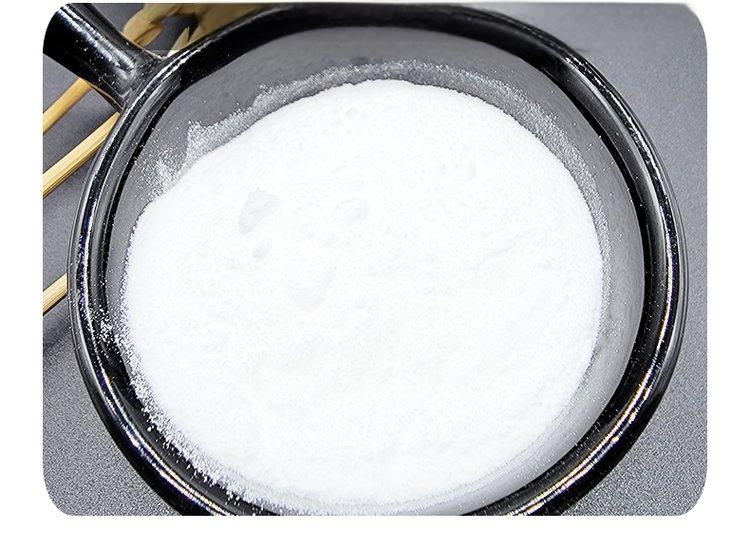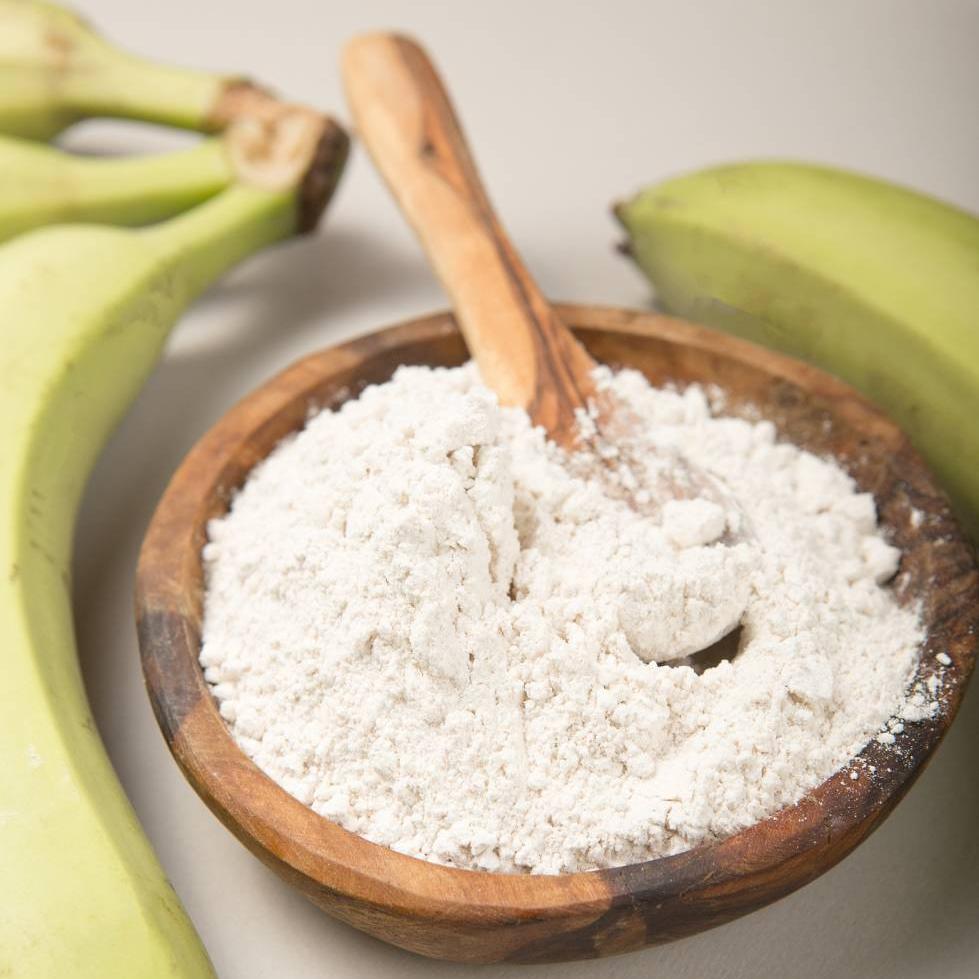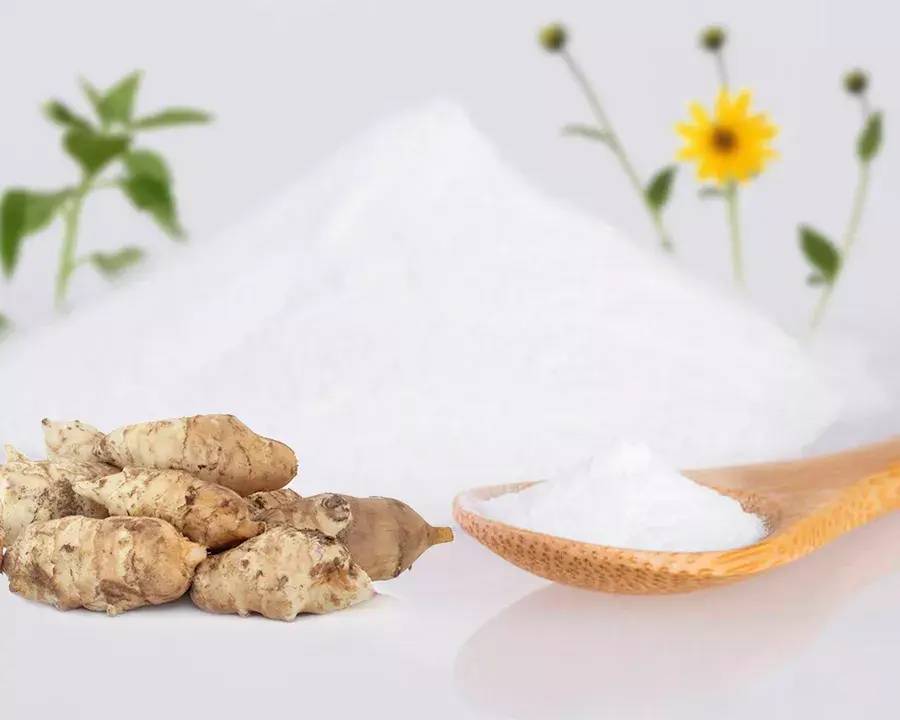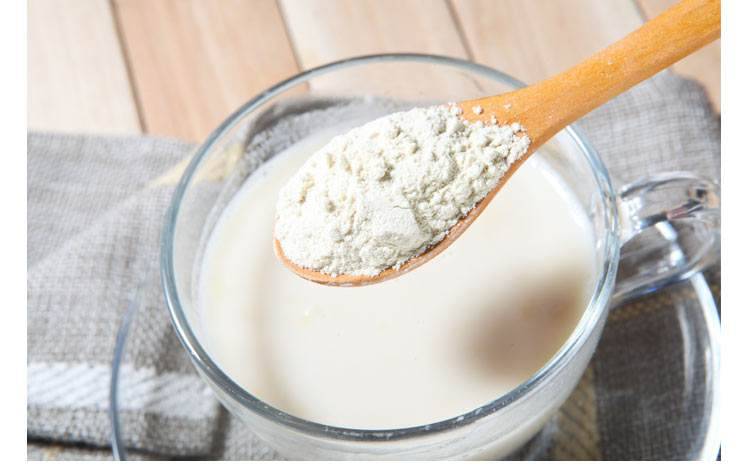What Is Isomaltooligosaccharide?
Isomaltooligosaccharide, also known as branching oligosaccharide and anomalously linked oligosaccharides, is a type of oligosaccharide with irregular linkages. Isomaltooligosaccharides are the most popular oligosaccharides on the market today. They consist of isomaltose, panose, isomaltotriose, oligosaccharides with four or more sugars, and glucose.
Isomaltooligosaccharides were successfully developed by Japan's Hayashibara Company in 1982, but Showa Sangyo was the first to bring them to market in 1985. In 1990, Japan's production of isomaltooligosaccharides reached 8,000 tons, and in 1991 it exceeded 10,000 tons , 1995 reached 11,000 tons, and in 1997 it had reached more than 15,000 tons. Its products include solids, 50% liquid (IMO-500), 90% liquid (IMO-900) and 90% powder (IMO-900).
China has a long history of starch sugar production, but the production of oligosaccharides only began in the 1990s. Industrial production began in Wuxi in 1995, and by 1998 production had reached about 10,000 tons. Currently, there are more than 10 manufacturers of a certain scale in the country, with a total production capacity of 50,000 tons. Oligosaccharides have been included in the “Ninth Five-Year Plan” scientific and technological research program. After physiological, biochemical and clinical trials, the Food Supervision and Inspection Institute of the Ministry of Health approved isomalto-oligosaccharides as a health food with bifidobacteria proliferation effects for release on the market.

1. The physiological functions of isomalto-oligosaccharides
Isomalto-oligosaccharides have become a hot topic because of their special physiological functions. First of all, isomalto-oligosaccharides have a special health-promoting effect on the gastrointestinal tract, and are increasingly being favoured by the food industry. They are a growth promoter for bifidobacteria, a beneficial bacteria group in the human intestine. After being ingested by the body, isomalto-oligosaccharides are not digested and absorbed by the stomach and small intestine, digested and absorbed, but instead go directly to the large intestine where they are used first by bifidobacteria. Other harmful bacteria in the intestine cannot use them, which helps bifidobacteria to multiply, thereby inhibiting the formation of harmful bacteria and putrefactive substances in the intestine, which is beneficial to the improvement of the intestinal flora and promotes the adjustment of the intestinal microecology to a virtuous cycle.
Isomalto-oligosaccharides are non-fermentable sugars that are not used by Streptococcus mutans (mutant streptococcus) and are not broken down by oral enzymes. They therefore have a protective effect on teeth. When combined with sucrose, isomalto-oligosaccharides strongly inhibit the synthesis of insoluble glucan, thereby preventing the formation of dental plaque and the demineralisation of the enamel on the tooth surface.
Isomalto-oligosaccharides are not hydrolyzed by human salivary enzymes or digestive enzymes in the small intestine. After ingestion, they do not increase blood glucose levels or blood insulin levels, so isomalto-oligosaccharides can prevent obesity and can be used as a health sweetener for diabetics.
After the human body ingests oligosaccharides, total cholesterol, triglycerides, free fatty acids, blood sugar, and blood pressure all decrease, while the same intake of sucrose all increases. Long-term consumption of isomalto-oligosaccharides can reduce the occurrence of cardiovascular disease and has the effect of reducing the incidence of cardiovascular disease.
2 Properties of isomalto-oligosaccharides
Isomalto-oligosaccharides have the following beneficial food processing properties.
2.1 Sweetness
IMO-500 (50% isomaltose) has a sweetness of 52, and IMO-900 (89% to 90% isomaltose) has a sweetness of 42. Isomaltulose with a low sweetness can replace part of the sucrose to reduce the sweetness of the food and improve the taste.
2.2 Viscosity
The viscosity of isomalt syrup is similar to that of a sucrose solution of the same concentration, and it has no adverse effect on the structure and physical properties of foods such as candy and pastries.
2.3 Heat resistance and acid resistance
Isomalt has excellent heat and acid resistance. A 50% concentration syrup will not decompose when heated at pH 3 and 120°C for a long time.
2.4 Moisture retention and prevention of starch aging
Isomaltooligosaccharides have a good effect on moisturizing and maintaining the quality of various foods. They can inhibit the crystallization of sucrose and glucose. Adding isomaltooligosaccharide syrup can also prevent starch aging and extend the shelf life of foods.
2.5 Coloring properties
The sugar molecules at the ends of isomaltulose oligosaccharides contain reducing groups, and when heated with proteins or amino acids, a Maillard reaction occurs and browning is produced. The degree of coloring is related to the sugar concentration, and is also related to the type of protein or amino acid being heated, the pH value, the heating temperature, and the length of time.
2.6 Water activity
When the concentration is 75% and the temperature is 25°C, the water activity of isomaltulose is 0.75, which is quite close to that of sucrose.
2.7 Freezing point depression
The freezing point depression of isomaltulose is similar to that of sucrose, and the freezing temperature is higher than that of fructose.
2.8 Fermentability
Isomalto-oligosaccharides are not utilized by yeast and lactic acid bacteria. They are not utilized by yeast and lactic acid bacteria in bread and fermented milk, but remain in the food to exert their various physiological functions and characteristics. At the same time, they can promote the development of bifidobacteria in fermented milk.
2.9 Anti-caries
Isomalto-oligosaccharides are not easily fermented by the tooth decay-causing bacterium Streptococcus mutans, so they produce less acid and do not easily corrode teeth. When used together with sucrose, they can also prevent sucrose from being acted on by Streptococcus mutans to produce water-insoluble high-molecular-weight glucan, inhibiting the cariogenicity of sucrose.

2.10 Safety
The maximum no-effect dose of isomaltulose is 2 g/kg body weight, and the acute oral toxicity of rats is LD50 44 g/kg (body weight) or more. Compared with sucrose 29.8 g/kg (body weight) and maltose 26.7 g/kg (body weight), it is safer. When this powdered sugar was added to drinking water and freely consumed by rats over a period of one year, the daily intake in long-term feeding tests was 2.7-5.0 g/kg (body weight). The results of the autopsy and blood tests showed no abnormalities. The bacterial reverse mutation assay and the cultured cell chromosome abnormality test did not show any mutagenicity.
3 Production process of isomalto-oligosaccharides
There are two completely different production routes for the saccharification process for producing isomaltulose. One uses maltose and maltulose as substrates, and the action of glucosyltransferase produces isomaltose, panose, isomaltotriose, isomaltotetraose, etc., bound by α-1.6 glycosidic bonds. Most products are now produced using this process. Another method uses glucose as the substrate and the action of glucosyltransferase to also produce isomaltooligosaccharides with α-1.6 glycosidic bonds, but the isomaltose content is not high and the control conditions are strict.
The first process route for producing isomaltooligosaccharides usually uses starch as the raw material and consists of two main steps. The first step is to use α-amylase to hydrolyze starch to obtain maltose syrup; the second step is to use α-glucosidase and β-amylase to produce isomaltose by a combination of glycosyl transfer. The later process involves conventional filtration, decolorization, desalination, concentration and drying. The key to this method of producing isomalto-oligosaccharides lies in the following aspects.
3.1 liquefaction
3.1.1 To ensure uniform liquefaction and a low DE value, the traditional liquefaction process must be replaced with a continuous steam jet liquefaction process. This process has several advantages in industrial production: (1) effective protein flocculation; (2) no production of insoluble starch particles; (3) no starch ageing; (4) the liquefied liquid is uniform and thorough, clear and transparent, with reduced viscosity and enhanced flow properties; and (5) prevents the production of small molecule precursor substances.
3.1.2 The slurry concentration and pH level have a direct impact on liquefaction quality. The substrate concentration should be as low as possible and controlled within the range of 17–18Bx. The pH is best between 6.2 and 6.4. If it is lower than 6.0, the enzyme activity will decrease, and if it is higher than 6.5, the reducing end glucose residues of oligosaccharides will isomerize to form other sugars.
3.1.3 The liquefaction DE value has a significant effect on quality
A low DE value is conducive to producing more isomalto-oligosaccharides and less glucose, but if the DE value is too low, it will affect the speed of material filtration. Therefore, the DE value is generally controlled between 14 and 16. When the liquefaction DE value is adjusted to an appropriate level, the liquefaction liquid is uniform and stable, which is conducive to improving product quality.
3.1.4 Liquefaction enzyme
It is necessary to use high-temperature α-amylase, which is highly heat-resistant. In the presence of Ca ions (50×10-6 to 70×10-6), the liquefaction temperature and the heat resistance of the enzyme can be increased.
3.2 Glycosylated transglycosides
The glycosylated transglycoside process requires that the content of glucose and dextrin be reduced as much as possible so that the total content of isomalt oligosaccharides reaches 55% to 60% (of the total sugar content), and the dextrin content is below 10%.
The hydrolytic enzymes that can be used are β-amylase and fungal α-amylase. When β-amylase is used, the glucose content in the saccharification liquid is low, and the sugar composition of the final product is relatively ideal. The disadvantage is that there is boundary dextrin, which affects the filtration rate. It is better to have an activity unit of more than 100,000 units/mL. The use of fungal α-amylase is advantageous because it is an endoenzyme, so it does not produce boundary dextrins, which is conducive to filtration. However, the disadvantage is that its product contains more glucose and a higher proportion of sugars above tetrose. Therefore, in production, we choose different hydrolases according to the production route and final product form.
3.3 Separation process and technology
The syrup must be separated, and if it is to be white and pure, it must be separated twice. The advanced acid-base method is generally used, which is very beneficial for improving the light transmittance of the syrup and the boiling temperature, reducing the ash, arsenic and aluminium content, and ensuring an appropriate pH value. Two aspects of this process require attention: the selection and regeneration of ion exchange resins; and the preparation of the separation column and the installation of process pipes.
3.4 Spray drying
Isomalto-oligosaccharides are heat-sensitive and highly hygroscopic when spray-dried, so thermal denaturation, agglomeration, sticking to walls, blockages and packaging caking often occur. The following measures can be taken to ensure smooth dusting: (1) correctly select spray-drying equipment; (2) optimise spray-drying process conditions; (3) use moisture absorbents to improve product quality.
4 Research on the application of isomalto-oligosaccharides
At present, even though oligosaccharides are in their infancy in China, the selling price of oligosaccharides is more than 10 times that of sucrose. It is impossible to set the selling price of oligosaccharides at the same level as sucrose, but minimizing the price difference with sucrose is beneficial to the food industry in reducing costs and expanding the market for oligosaccharides. There are two ways to solve this problem.
4.1 Use local raw materials to produce isomalto-oligosaccharides to reduce production costs
For example, corn starch, “three potato” starch, wild kudzu powder, corn husk, rice core, indica rice, cane molasses, and soybean aqueous solution are widely available. Maize bran is mainly used as feed, and its economic value is not high. Adding too much to the feed will also reduce the feed utilization rate. Therefore, it is urgent to find ways to utilize maize bran and improve its utilization value. Corn is mostly used in the feed industry in China, and its processing is mainly focused on low-fat dried corn flour. The usable part of corn is starch, and isomalto-oligosaccharides are also one of the ways to further process it.

Due to the unreasonable planting structure in the Yangtze River Basin, under the current market economic situation, the food problem is very prominent. There is a lack of high-quality rice and processed grains, and there is a large backlog of early indica rice, which has caused farmers to sell their grain, a heavy burden on the government's finances, and is small, etc. Using early indica rice to prepare isomalto-oligosaccharides has the advantages of a wide range of raw material sources, low prices, and the ability to obtain a high added value of the grain, while also alleviating the series of problems caused by the backlog of early indica rice.
4.2 Reduce costs through process production
①Although the amount of enzyme used in the production of isomalto-oligosaccharides is not large, if it is used up at once, the production cost will be high due to its high price. Research on immobilized enzyme technology can reduce costs. ②Research on the production process of isomalto-oligosaccharides, using a continuous process to improve yield and quality. ③ Select a suitable carrier food, and eliminate the troublesome high-cost operating units in the food industry, such as separation, concentration, and drying, from the process. The intermediate product can be directly applied to the carrier food, which saves costs and finds users.
References:
[1] Wang Lewu. Properties and applications of oligosaccharides [J]. Guangdong Chemical Industry, 1999, (4): 52-53.
[2] Lu Yicheng, Gao Zongzhang. Functional properties and industrial development of oligo-isomaltose [J]. Grain and Feed Industry, 1999, (7): 42-44.
[3] Zhu Lixiong, Ling Jie, Zhang Wenwen. Production technology and product development of oligosaccharide isomaltose [J]. Starch and Starch Sugar, 2000, (1): 36-37, 47.
[4] Jin Qirong, Xu Qin. Properties, production and application of isomalto-oligosaccharides (oligosaccharides) [J]. Starch and Starch Sugar, 1996, (3): 5-9.
[5] Bao Yuanxing. Enzyme production of isomalto-oligosaccharide syrup [J]. Food Industry, 1997, (3): 2-3.
[6] Bao Yuanxing, Yang Weiya, Sun Weirong. The technology and process equipment of oligosaccharides [J]. 1999, (3): 8-9.
[7] Bao Yuanxing, Yang Weiya, Sun Weirong. Problems in the development of oligosaccharides and current countermeasures [J]. Fine and Specialty Chemicals, 1999, (3-4): 5-7.
[8] Yang Liansheng, Fu Zuowei, He Xiaoxiong, et al. Enzyme preparation of isomalto-oligosaccharides [J]. Food Industry Science and Technology, 1999, 20(2): 19-20.
[9] Yang Liansheng, Fu Zuowei, He Xiaowei, et al. Preparation of isomalto-oligosaccharides with α-glucosidase as the main enzyme [J]. Food Science, 1999, (2): 20-22.


 English
English French
French Spanish
Spanish Russian
Russian Korean
Korean Japanese
Japanese






